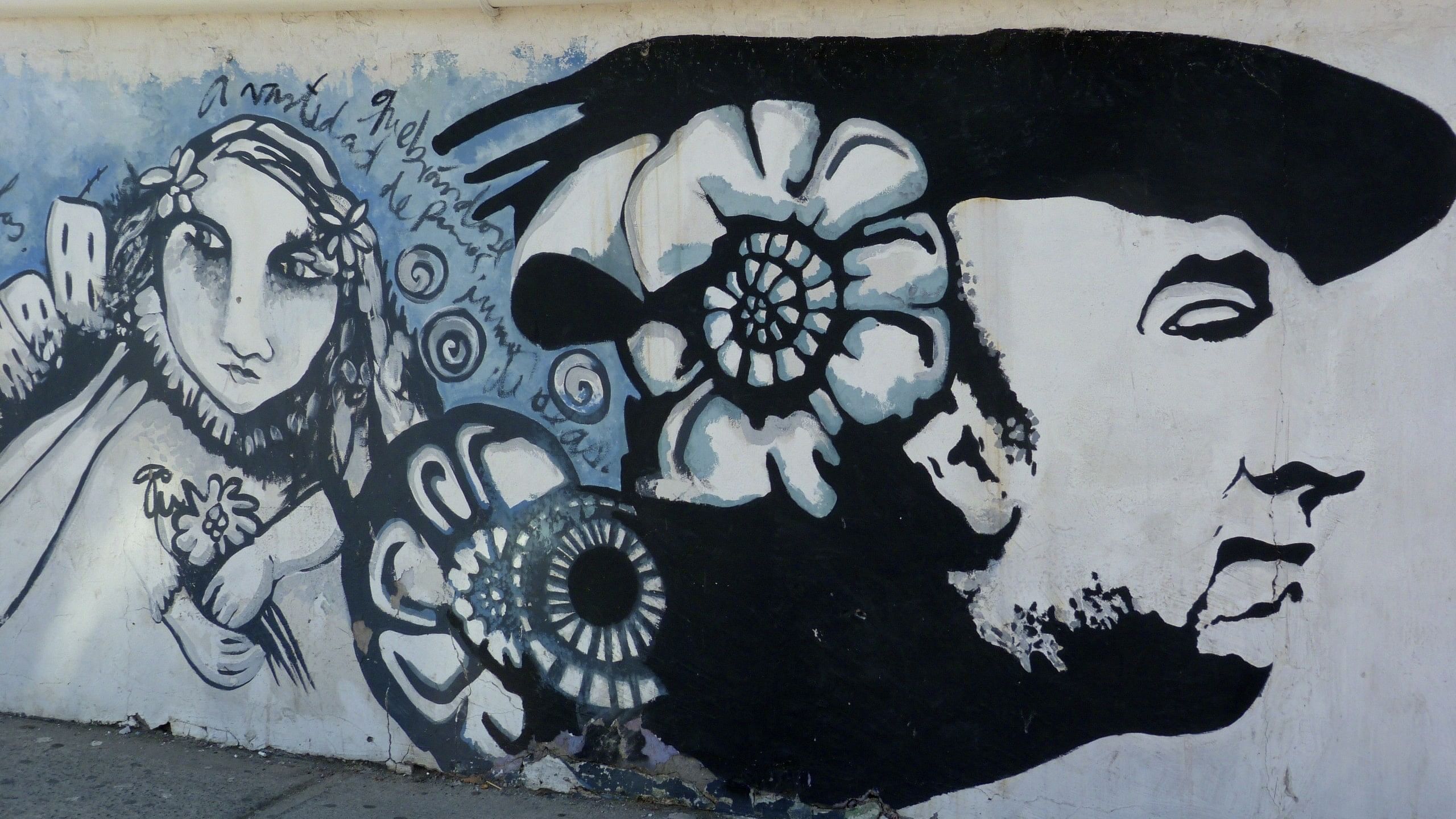
A graffiti of Pablo Neruda in Santiago, Chile
Credit: Wikimedia Commons
Even for the most poetry-averse folk, February carries a lyrical lilt.
Suddenly, love manifests itself more than it usually does. The oh-poetry-is-dead people are sorting through their Spotify lists, looking at poetry anthologies, and browsing the bookstores for old favourites like Pablo Neruda: wondering how to tell our friends, parents, and loved ones that we feel deeply and steadily for them. February is indeed the month of love poetry.
The fact that poetry finds its place, gloriously, triumphantly, in a world dominated by emojis for emotions and instant dates over enduring affairs, is a wondrous thing. And today, I am looking at the enduring joy of love poetry.
Let’s start with the classics. We can’t discuss love poetry without the iconic How Do I Love Thee? Elizabeth Barrett Browning’s poem was ahead of its time. Yes, the language is archaic, but the ideas are not. For starters, it does not speak to any particular gender, making it a versatile poem in many ways. Next, it celebrates the agency a woman should have in her choices. This progressive thought is remarkable because the poem was published in 1850. This isn’t a poem about romance. It is also a poem about friendship and the accompanying loyalty and love.
“How do I love thee? Let me count the ways. /I love thee to the depth and breadth and height/ My soul can reach, when feeling out of sight/For the ends of being and ideal grace.”
Another unforgettable poem is When You Are Old by William Butler Yeats. The poet makes a passionate plea to the reader to accept his love, saying, “How many loved your moments of glad grace, /And loved your beauty with love false or true, /But one man loved the pilgrim soul in you, /And loved the sorrows of your changing face(…)”
Modern love poetry navigates contemporary relationships with candour and vulnerability, at once strong and gentle. There’s a more unrestrained use of language and imagery. The narratives have changed from being overwhelmingly heterosexual to embracing queer love too. For instance, in Love Poem to a Butch Woman, Deborah A Miranda says, “This is how it is with me:/so strong, I want to draw the egg/from your womb and nourish it in my own. I want to mother your child made only/ of us, of me, you: no borrowed seed/from any man.”
There is a deeper exploration and embracing of ways of being, as seen in On Trans By Miller Oberman, which ends with these lines, “I felt heat changing me. The word for this is / transdesire, but in extreme cases / we call it transdire/ or when this heat becomes your maker we say/ transire, or when it happens/ in front of a hearth: transfire.”
One of the most lasting loves I have experienced is friendship. In In The Company Of Women, January Gill-O’Neil says, “I want to hoot and snort and cackle and chuckle. Let your laughter fill me like a bell. Let me listen to your ringing and singing/as Billie Holiday croons above our heads.”
Love of any kind is also a place of quiet acceptance. I leave you with one of my favourite poems, The Lovers, by Timothy Liu: “I was always afraid/of the next card/ the psychic would turn/over for us—/Forgive me/for not knowing/how we were/every card in the deck.”
The World in Verse is a new monthly column on the best of new (and old) poetry.
The writer is a poet, teacher, podcaster, voice actor and speaker. She has published two collections of poetry. Send your thoughts to her at bookofpoetry@gmail.com